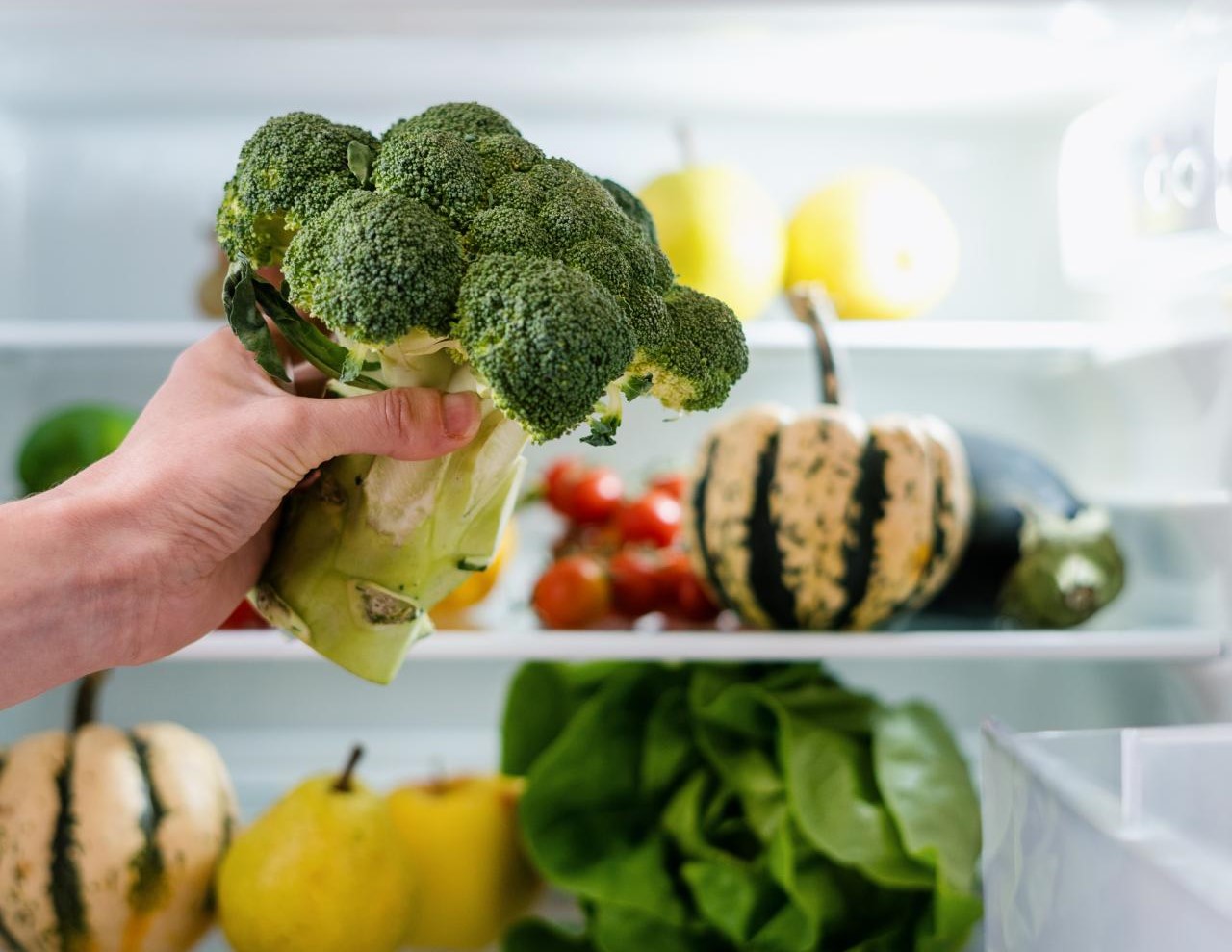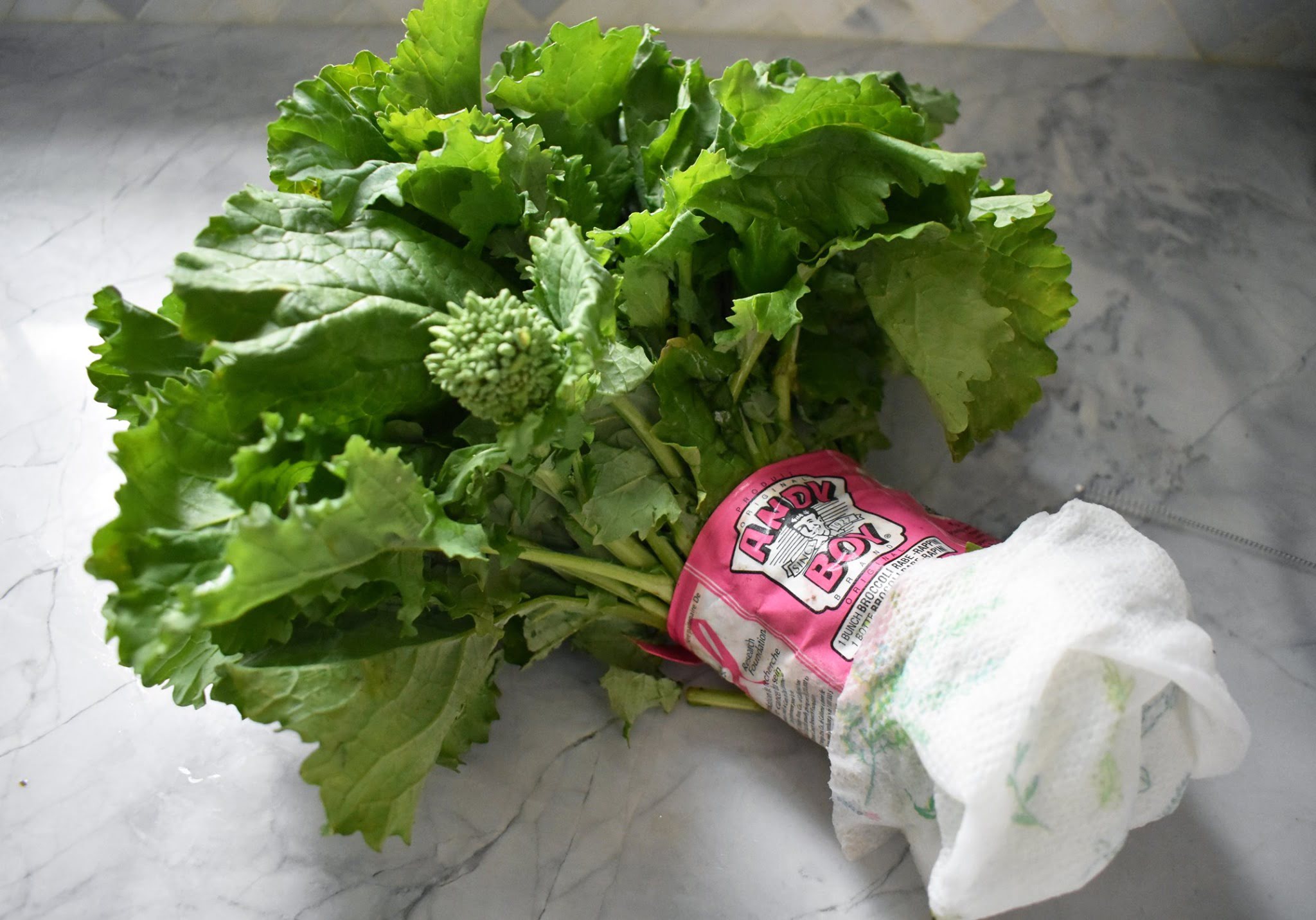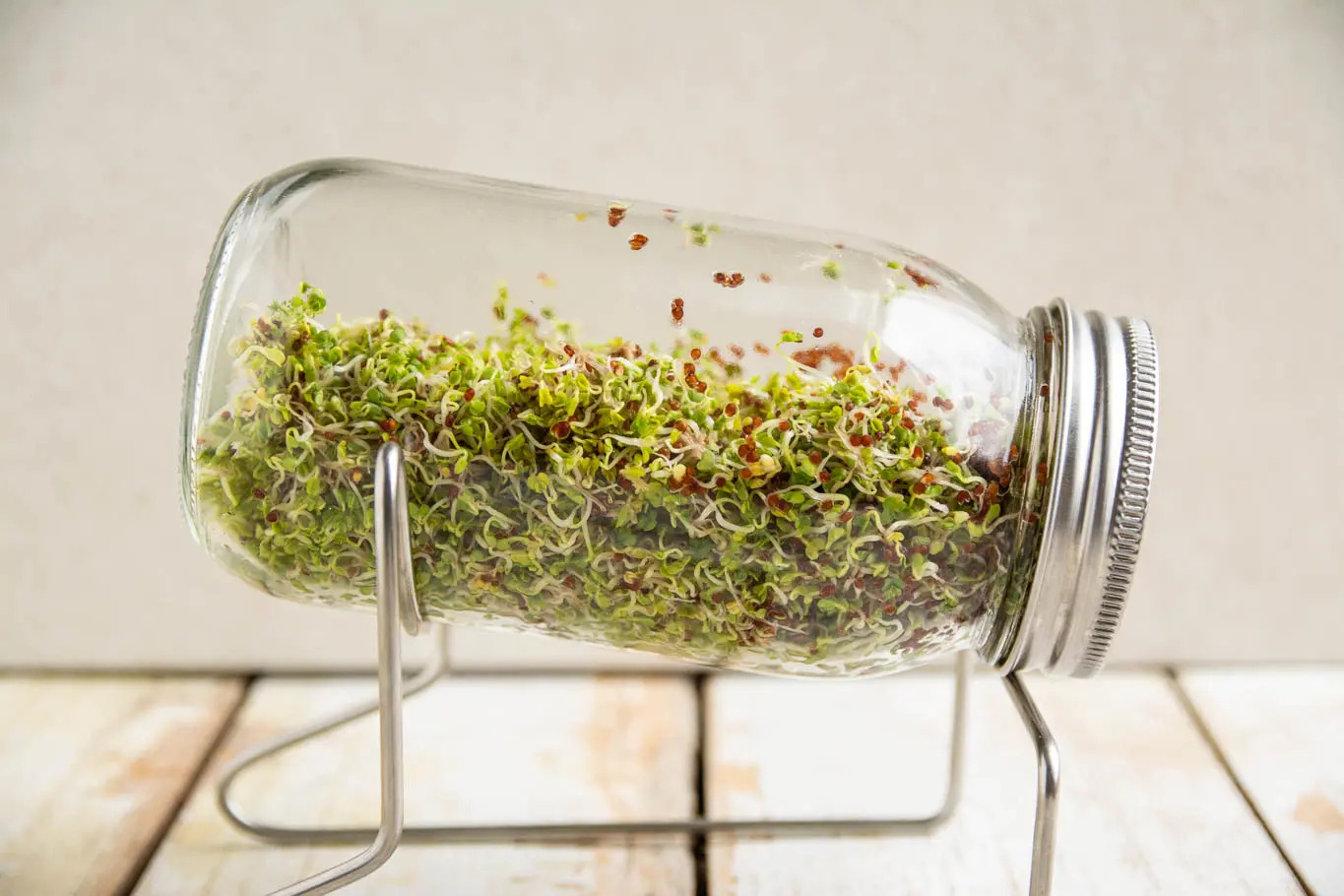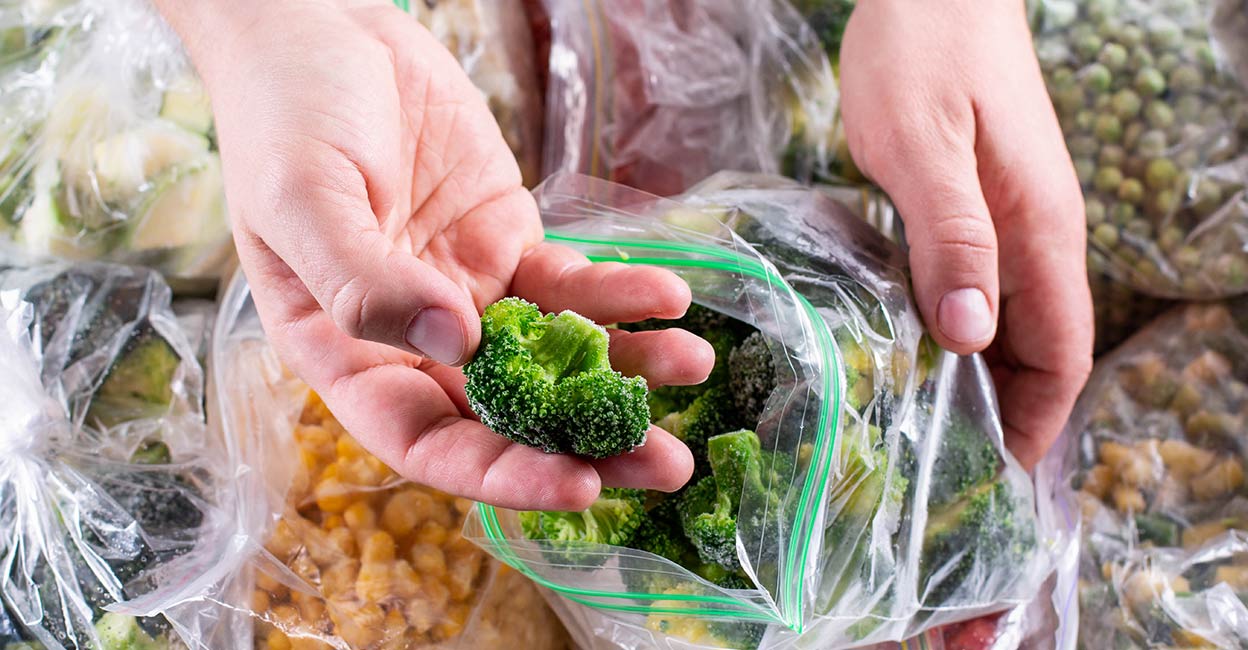

Articles
How To Store Broccoli In The Refrigerator
Modified: February 22, 2024
Learn how to store broccoli in the refrigerator and keep it fresh for longer with our helpful articles. Find tips, tricks, and techniques to extend the shelf life of your favorite vegetable.
(Many of the links in this article redirect to a specific reviewed product. Your purchase of these products through affiliate links helps to generate commission for Storables.com, at no extra cost. Learn more)
Introduction
Broccoli is a nutritious and versatile vegetable that adds color and flavor to a variety of dishes. Whether you enjoy it steamed, roasted, or sautéed, properly storing broccoli is essential to maintain its freshness and prolong its shelf life. By following some simple guidelines, you can ensure that your broccoli stays fresh and crisp for a longer period of time.
In this article, we will discuss why proper storage is important, general guidelines for storing broccoli, steps to store broccoli in the refrigerator, tips for extending its shelf life, how to store broccoli florets separately, and how to blanch and freeze broccoli. By implementing these techniques, you can enjoy the benefits of this nutritious vegetable for an extended period of time, saving both money and food waste. So let’s dive in and discover the best ways to store broccoli!
Key Takeaways:
- Proper storage of broccoli is crucial to maintain its freshness, flavor, and nutrients. Follow simple steps to store broccoli in the refrigerator and extend its shelf life, reducing food waste and saving money.
- Blanching and freezing excess broccoli is a convenient way to preserve its quality for up to 12 months. By following storage tips and blanching techniques, you can enjoy fresh and nutritious broccoli year-round.
Read more: How To Store Broccoli
Why is Proper Storage Important?
Proper storage of broccoli is essential to maintain its freshness, texture, and nutritional value. When broccoli is not stored correctly, it can spoil quickly, resulting in a mushy texture, loss of flavor, and a decrease in its nutrient content.
One of the main reasons why proper storage is important is to prevent moisture loss. Broccoli has a high water content, and when exposed to air, it can quickly lose moisture, leading to wilting and dryness. Additionally, improper storage can also cause the development of mold or bacterial growth, which can be harmful to your health.
Furthermore, broccoli contains vitamins and antioxidants that are highly susceptible to degradation when exposed to light, air, and heat. Vitamin C, for example, is particularly sensitive to these factors and can be rapidly depleted if not stored properly. By protecting broccoli from the elements that can degrade its nutrients, you can ensure that you are getting the maximum nutritional benefit from this vegetable.
Another reason why proper storage is important is to reduce food waste. When broccoli is not stored correctly, it can spoil before you have a chance to use it, leading to unnecessary waste and the need to repurchase more. By properly storing your broccoli, you can extend its shelf life and minimize food waste, ultimately saving both money and resources.
Overall, proper storage of broccoli is crucial to maintain its quality, flavor, and nutritional value. By following the guidelines for storage, you can enjoy fresh and delicious broccoli that is packed with nutrients and ready to be incorporated into your favorite recipes.
General Guidelines for Storing Broccoli
When it comes to storing broccoli, following some general guidelines can help ensure its freshness and quality. Here are a few tips:
- Choose fresh broccoli: Start by selecting fresh broccoli from the store or farmer’s market. Look for firm stalks, tight and dark green florets, and no signs of yellowing or wilting.
- Keep it cool: Broccoli is a cool-weather vegetable and is best stored in a cool environment. The ideal temperature for storing broccoli is between 32°F (0°C) and 40°F (4°C).
- Avoid moisture: Moisture can cause broccoli to wilt and spoil quickly. Make sure to remove any excess moisture by patting the broccoli dry before storing it.
- Don’t wash before storing: It’s best to store broccoli unwashed to prevent excess moisture. Washing the broccoli before storage can accelerate its decay.
- Wrap in a paper towel: To further prevent moisture buildup, you can wrap the broccoli loosely in a paper towel or place it in a perforated plastic bag.
- Avoid plastic bags: While plastic bags can be used to store broccoli, it is important to ensure they are perforated or allow some airflow. This helps prevent the buildup of excess moisture, which can lead to spoilage.
- Separate from ethylene-producing fruits: Broccoli is sensitive to ethylene gas, a natural gas released by some fruits that can cause it to ripen and decay quickly. Store broccoli away from ethylene-producing fruits like apples, bananas, and tomatoes.
By following these general guidelines, you can significantly extend the shelf life of your broccoli and ensure that it stays fresh and crisp until you’re ready to use it.
Steps to Store Broccoli in the Refrigerator
Storing broccoli in the refrigerator is a simple and effective way to keep it fresh and crisp for an extended period of time. Follow these steps to store broccoli properly:
- Prepare the broccoli: Start by trimming off any excess leaves or tough stems from the broccoli. Rinse the broccoli under cool water to remove any dirt or debris.
- Dry the broccoli: Shake off any excess water from the broccoli or pat it dry with a paper towel. It’s important to remove excess moisture to prevent the broccoli from becoming soggy.
- Wrap in a damp paper towel: Take a damp paper towel and wrap it around the base of the broccoli where the stems meet. This will help keep the broccoli hydrated without causing excess moisture buildup.
- Place in a perforated plastic bag: Put the wrapped broccoli in a perforated plastic bag or a plastic bag with a few small holes punched in it. The perforations allow for airflow, preventing moisture buildup and helping to maintain the freshness of the broccoli.
- Store in the refrigerator: Place the bagged broccoli in the vegetable crisper drawer of your refrigerator. The crisper drawer provides a controlled environment with slightly higher humidity, which is ideal for storing vegetables.
- Check regularly: Keep an eye on the broccoli and check for any signs of wilting or spoilage. Remove any broccoli that is starting to wilt or become discolored to prevent it from affecting the rest of the batch.
By following these steps, you can ensure that your broccoli stays fresh and maintains its quality for up to a week in the refrigerator.
Tips for Extending the Shelf Life of Broccoli
While storing broccoli in the refrigerator can help prolong its freshness, there are some additional tips you can follow to further extend its shelf life. Here are some handy tips:
- Don’t wash until ready to use: To prevent moisture build-up and keep your broccoli fresh, avoid washing it until you’re ready to cook or eat it. Excess moisture can lead to the growth of bacteria and cause the broccoli to spoil quickly.
- Trim the stems: Trim the bottom of the broccoli stems and remove any discolored or tough parts. This not only improves the overall appearance of the broccoli but also helps maintain its freshness.
- Store florets and stems separately: If you’re planning to use only the florets, store them separately from the stems. This is because the florets tend to deteriorate faster than the stems, and separating them can help extend their individual shelf lives.
- Keep it in an airtight container: If you have already cut or chopped the broccoli, store it in an airtight container instead of a plastic bag. This helps to maintain its freshness and prevents it from taking on any off-flavors or odors from the refrigerator.
- Blanch and freeze: If you have excess broccoli that you won’t be able to use before it starts to wilt, consider blanching and freezing it. Blanching helps to preserve the color, texture, and nutrients of the broccoli, while freezing allows you to store it for a longer period of time. We’ll cover this process in more detail later in the article.
- Rotate often: To ensure that you use the oldest broccoli first and prevent any from going to waste, organize your refrigerator so that the newest bunch of broccoli is placed in the back. This way, you’ll be prompted to use the older broccoli before it spoils.
By following these tips, you can maximize the shelf life of your broccoli and minimize food waste, ensuring that you always have fresh broccoli to enjoy in your meals.
Store broccoli in the refrigerator in a perforated plastic bag to maintain moisture. Keep it in the crisper drawer and use within 3-5 days for best quality.
Read more: How To Store Washed Broccoli
How to Store Broccoli Florets Separately
If you want to store broccoli florets separately from the stems, here’s a simple method to keep them fresh:
- Separate the florets: Start by carefully separating the florets from the main stem of the broccoli. Use a sharp knife or your hands to gently pull apart the florets.
- Rinse and dry: Rinse the florets under cool water to remove any dirt or debris. Shake off the excess water or pat them dry with a paper towel to remove any moisture.
- Wrap in a paper towel: Take a clean, dry piece of paper towel and wrap it around the base of the florets where they were attached to the stem. This will help absorb any excess moisture and keep the florets crisp.
- Place in a sealed container: Transfer the wrapped florets to a sealed container or a resealable plastic bag. Make sure to remove as much air as possible from the container or bag before sealing it.
- Store in the refrigerator: Place the sealed container or bag of florets in the vegetable crisper drawer of your refrigerator. The controlled temperature and slight humidity in the crisper drawer will help keep the florets fresh.
- Use within a few days: While storing the florets separately can help extend their freshness, it’s still best to use them within a few days for optimal taste and texture.
By storing the florets separately, you can keep them fresh and prevent them from prematurely wilting or becoming soggy. This method also allows for easy access and use when you’re ready to cook or add them to your favorite dishes.
How to Blanch and Freeze Broccoli
If you have an abundance of broccoli and want to preserve it for longer-term storage, blanching and freezing is an excellent option. Here’s a step-by-step guide to blanching and freezing broccoli:
- Prepare the broccoli: Start by washing the broccoli under cool running water to remove any dirt or debris. Trim off any excess leaves and tough stems.
- Separate into florets: Use a sharp knife or your hands to separate the broccoli into bite-sized florets.
- Blanch the florets: Bring a large pot of water to a boil and add the broccoli florets. Let them boil for about 2-3 minutes until they become bright green and slightly tender. Be careful not to overcook them, as they should still have a crisp texture.
- Cool down quickly: Immediately after blanching, transfer the broccoli florets to a bowl filled with ice water. This will stop the cooking process and help preserve the vibrant green color and crispness of the broccoli.
- Drain excess water: Once the broccoli has cooled down, drain the florets in a colander and shake off any excess water. It’s important to remove as much water as possible to prevent ice crystals from forming during freezing.
- Package for freezing: Place the drained broccoli florets in freezer-safe bags or containers. Squeeze out any air from the bags or use a vacuum sealer to ensure a tight seal.
- Label and date: Don’t forget to label the bags or containers with the date of freezing. This will help you keep track of their freshness and allow you to use the oldest broccoli first.
- Freeze: Place the bags or containers in the freezer and ensure they’re placed in a flat position to prevent the broccoli from clumping together.
Frozen broccoli can be stored for up to 12 months. When you’re ready to use the frozen broccoli, simply thaw it in the refrigerator overnight or cook it directly from frozen in your preferred recipe.
Blanching and freezing not only helps you preserve excess broccoli, but it also retains its nutritional value, color, and texture. It’s a convenient way to enjoy the benefits of broccoli throughout the year.
Frequently Asked Questions (FAQs)
Here are some commonly asked questions about storing broccoli:
- Can I store broccoli at room temperature?
- How long can I store broccoli in the refrigerator?
- Can I freeze raw broccoli without blanching?
- Should I store broccoli with or without the rubber band?
- Can I store cut broccoli?
- Can I store broccoli in the freezer without blanching?
- How can I tell if broccoli has gone bad?
No, broccoli is best stored in the refrigerator to maintain its freshness and prolong its shelf life.
When stored properly in the refrigerator, broccoli can stay fresh for up to a week.
While it’s possible to freeze raw broccoli without blanching, blanching helps preserve its color, texture, and nutritional value better.
It’s best to remove the rubber band when storing broccoli as it can cause uneven pressure and potentially damage the stems.
Yes, you can store cut broccoli. Make sure to place it in an airtight container or bag in the refrigerator and use it within a few days for the best quality.
While it’s possible to freeze broccoli without blanching, blanching helps maintain its color, texture, and nutritional value during freezing.
Signs of spoiled broccoli include yellowing or wilting florets, an unpleasant smell, and slimy or mushy texture. If you notice any of these signs, it’s best to discard the broccoli.
Remember, proper storage techniques and following food safety guidelines are key to ensuring the freshness and quality of your broccoli.
Conclusion
Properly storing broccoli is essential to maintain its freshness, flavor, and nutritional value. By following the general guidelines for storing broccoli and implementing the steps to store it in the refrigerator, you can ensure that your broccoli stays fresh and crisp for a longer period of time. Additionally, taking advantage of the tips for extending the shelf life of broccoli and learning how to store broccoli florets separately can further help optimize its freshness and prevent unnecessary waste.
For those who have an abundance of broccoli, blanching and freezing is a great option to preserve its quality for an extended period. By properly blanching and freezing broccoli, you can enjoy its vibrant color, texture, and nutrients even months after its harvest.
Remember to practice good food safety measures, such as avoiding cross-contamination and regularly checking for signs of spoilage. By taking these precautions and following the recommendations in this article, you can ensure that your broccoli remains fresh and delicious when incorporating it into your meals.
So, next time you bring home a bunch of fresh broccoli, use these storage techniques to maximize its shelf life and enjoy its many health benefits. Happy cooking!
Frequently Asked Questions about How To Store Broccoli In The Refrigerator
Was this page helpful?
At Storables.com, we guarantee accurate and reliable information. Our content, validated by Expert Board Contributors, is crafted following stringent Editorial Policies. We're committed to providing you with well-researched, expert-backed insights for all your informational needs.















0 thoughts on “How To Store Broccoli In The Refrigerator”